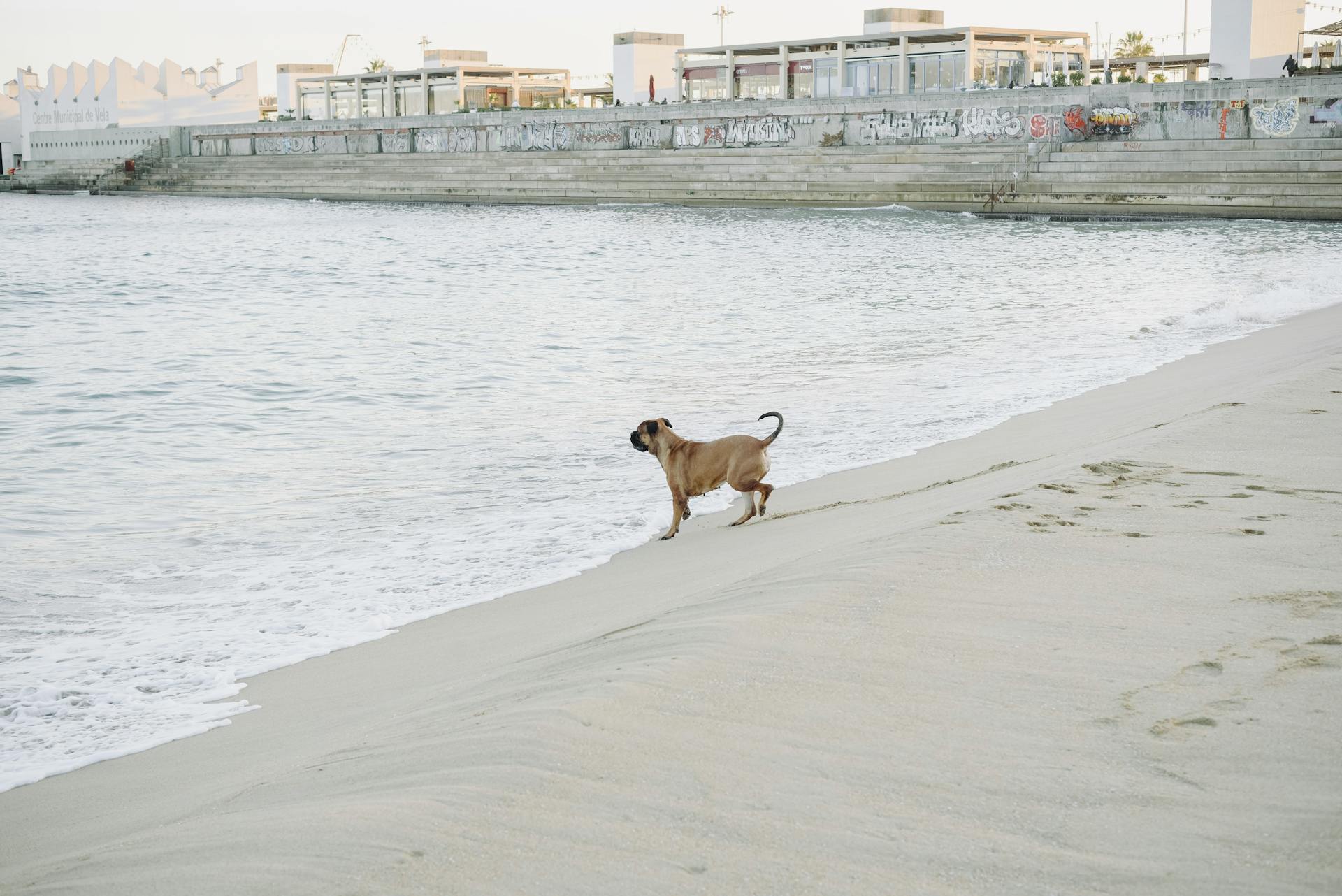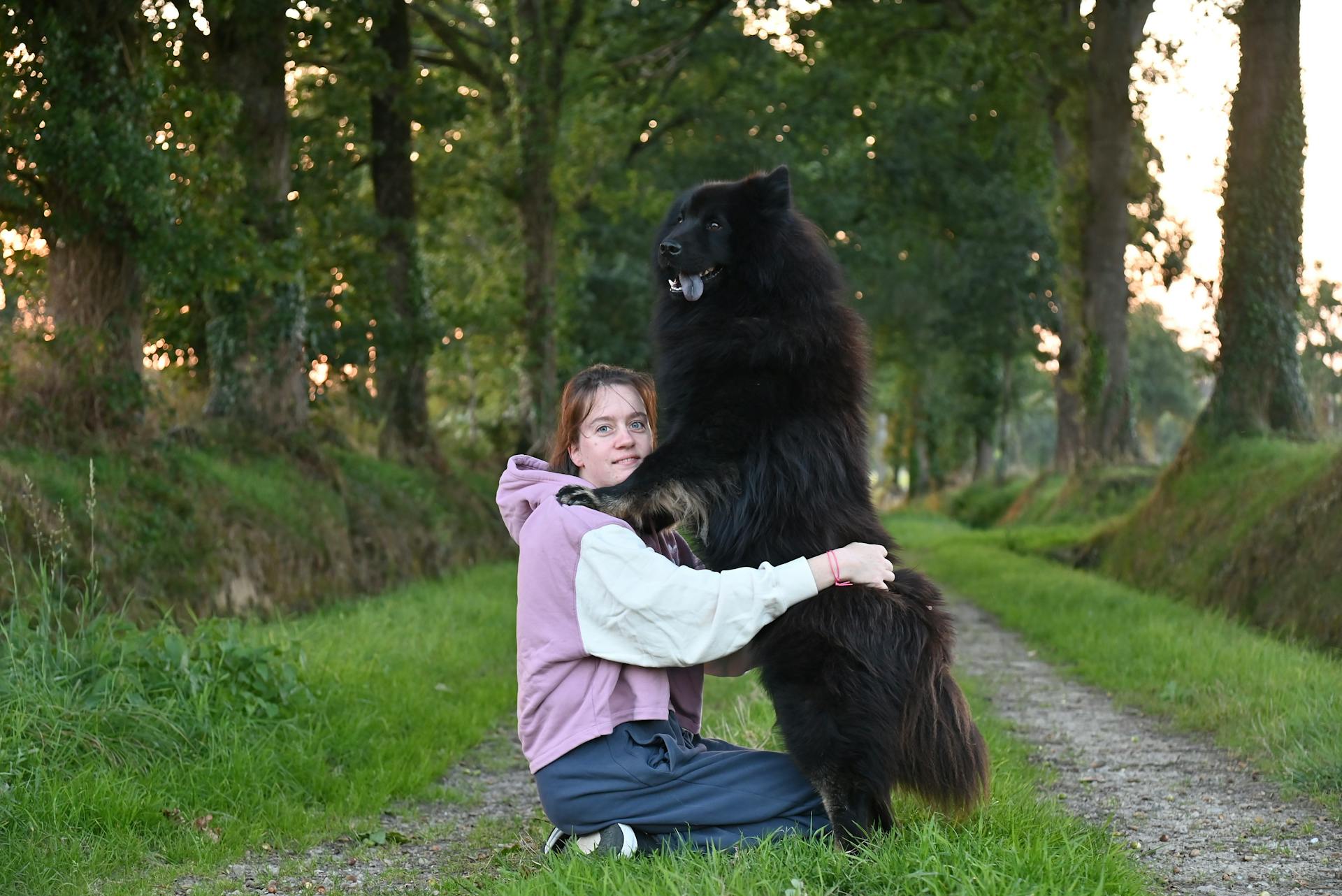
Bullmastiffs are a powerful breed that can be intimidating, but they're also known for being gentle and even-tempered. However, some Bullmastiffs can develop aggressive behavior, which can be a challenge for owners.
One common cause of aggression in Bullmastiffs is a lack of socialization during the critical puppy period. This is when puppies are most receptive to new experiences and people, and it's essential to expose them to various environments, people, and situations to help them develop good social skills.
Bullmastiffs are naturally protective of their families, which can sometimes be misinterpreted as aggression. However, this instinct is a result of their history as guard dogs, bred to defend their owners and property.
To address aggression in Bullmastiffs, it's crucial to identify the underlying cause and develop a plan to address it. This may involve training, socialization, or even seeking professional help from a veterinarian or a certified animal behaviorist.
Bullmastiff Basics
Investing in training is crucial for raising a Bullmastiff, as firm and consistent leadership is essential for these protective dogs.
Firm leadership is not about being a drill sergeant, but rather setting clear boundaries and expectations.
Training a Bullmastiff can be fun by introducing different dog toys and games, making the process enjoyable for both you and your dog.
Gradually introducing puppies to other people and animals is vital for socialization and preventing behaviors like growling or jumping.
Teaching your Bullmastiff to walk well on lead is a top priority, especially as they grow to weigh 130 pounds.
You can introduce commands like "heel" and "stay" and reinforce them with treats or praise to encourage good behavior.
Consistency is key in training a Bullmastiff, so be sure to set clear expectations and reward good behavior.
Here's an interesting read: Can Dog Aggression Be Trained Out
History
Bullmastiffs originated in England in the mid-1880s as a solution to poaching problems on large country estates.
Their creators wanted to breed a dog that was quick, assertive, yet even-tempered, to capture trespassers without harming them.
Gamekeepers on these estates needed a dog that could track with stealth, run fast, and pin down poachers until the gamekeeper arrived.
This new breed of dog was developed by breeding mastiffs and bulldogs together, resulting in an imposing animal with impressive abilities.
The name "Bullmastiff" likely comes from the combination of the two breeds used in their creation.
These dogs soon became popular in British dog shows and competitions, with breed fanciers pushing for recognition with England's Kennel Club.
Bullmastiffs were imported to the US in the 1920s by oil magnate John D. Rockefeller, who wanted them to roam the grounds of his country estate, Kykuit.
Care and Needs
Bullmastiffs need a secured, fenced area to exercise, and shouldn't be taken off-leash except in their home environment. They can do well as apartment dwellers if taken outside for regular walks.
They need regular exercise, but not too much, especially when young and still growing. Nice, long walks will suit them just fine, but avoid repetitive, stressful strain on their joints.
Bullmastiffs aren't fond of hot and humid conditions, so make sure they have a cool place to rest. They should exercise during cool mornings or evenings, especially during peak summer heat.
Bullmastiffs: What's Good
Bullmastiffs can make excellent pets, but it's essential to have experience with big protective dogs and consistently stick to rules and training.
Bullmastiffs are loyal, courageous, and devoted companions, with a heart that's not meant to be aggressive. They were trained to target poachers, not to maul intruders, but to pin them until their handler arrived.
Giving your Bullmastiff the best possible start means investing in training, which can be fun by introducing different dog toys and games. This doesn't mean you have to be a drill sergeant all the time, but firm and consistent leadership is crucial.
Teaching your Bullmastiff to walk well on lead is essential, especially since they can weigh up to 130 pounds and refuse to go to the vet if they don't want to. Introduce commands like heel and stay, and reinforce them with a treat or praise.
Young children should be monitored around large dog breeds, and taught how to handle them with care and respect, as they might try to climb on or tug on the dog, causing stress and discomfort.
Worth a look: Bullmastiff Training
Living Needs

Bullmastiffs need a secured, fenced area to exercise in, and shouldn't be taken off-leash except in their home environment.
They can thrive in apartment living if taken outside for regular strolls and sniffing sessions, but it's essential to monitor their exercise levels to avoid repetitive strain on their joints.
Nice, long walks are perfect for bullmastiffs, but they're not built for marathon running.
Bullmastiffs aren't fond of hot and humid conditions, so make sure they have a cool place to rest.
Choose cool mornings or evenings for walks when the summer heat is intense.
With proper supervision and socialization from an early age, bullmastiffs can do well around other dogs, even at dog parks.
However, they do have high prey drives, so it's crucial to keep an eye on them around smaller dogs like Yorkies or Chihuahuas.
Proper socialization can make all the difference in a bullmastiff's comfort level around other dogs.
A different take: Why Are Chihuahuas so Aggressive
Care
Bullmastiffs need regular exercise, but it's essential to avoid overexerting them, especially in hot and humid conditions. They should have a cool place to rest and exercise during cooler parts of the day.

A bullmastiff's large size means they can be a bit clumsy, so it's crucial to supervise interactions with young children to avoid accidents. They might react to pain and irritation if handled roughly.
Bullmastiffs are not high maintenance when it comes to grooming, but they do require some attention. They'll need a quick brushing through the week to keep them looking neat and tidy.
Their flat-faced nature means they drool a lot, and their digestive system can cause noxious fumes. Regular dental care, nail trimming, and ear checks will help keep them looking and smelling their best.
Feeding your bullmastiff puppy large-breed puppy food can help protect their joints as they grow. They'll shed a bit, especially during spring and fall, but a regular grooming routine will keep them looking great.
For another approach, see: Bull Mastif Puppy
Aggressive Behavior
Aggressive behavior in Bullmastiffs can occur due to a variety of reasons, such as poor socialization, fear, territoriality, or lack of training.
A Bullmastiff's protective nature can manifest as aggression towards strangers or other animals, and even towards their own family if they feel threatened or fearful.
Proper training and socialization from a young age can help manage aggressive behavior in these dogs.
Bullmastiffs may exhibit aggressive behavior if they feel their territory or family is being threatened, and this can be a result of their natural protective instincts.
A fearful or anxious Bullmastiff can be a reactive one, and when combined with their power and determination, it can lead to unwanted aggression.
If a Bullmastiff bites a person, it can cause serious injuries, including fractures, torn ligaments, tendons, and muscles, and even fatal injuries in extreme cases.
Bullmastiffs require regular training and socialization to prevent aggressive behavior, and a professional dog trainer or behaviorist can be a valuable resource in addressing any aggressive tendencies.
A Bullmastiff's aggression can be managed with the right approach and a pack leader mindset, but it requires effort and dedication from the owner.
On a similar theme: Are Goldendoodles Protective
Health and Lawsuits

Health issues that can affect Bull Mastiffs' lifespan include hip dysplasia, elbow dysplasia, bloat, heart conditions, and cancer. Regular veterinary care and early detection can help manage these issues.
Maintaining a healthy diet, providing regular exercise, and avoiding overfeeding can also prevent certain health issues in Bull Mastiffs. This can help promote a longer and healthier lifespan for these dogs.
Bull Mastiff bites can cause severe injuries, including fractures, torn ligaments, tendons, and muscles, and even hemorrhages. In extreme cases, these bites can be fatal.
For more insights, see: Lifespan of a Bullmastiff
Health Issues Affecting Lifespan
Bull Mastiffs are generally healthy dogs, but they may be prone to certain health issues that can affect their lifespan.
Hip dysplasia and elbow dysplasia are two common health issues that can cause limping and lameness in Bull Mastiffs. Regular veterinary care can help manage these conditions.
Bloat, also known as gastric torsion, can be a life-threatening issue in Bull Mastiffs. It's essential to be aware of the symptoms, such as difficulty breathing or rapid breathing.
Worth a look: Bull Terrier Aggressive Behavior

Heart conditions can also affect Bull Mastiffs, making it crucial to monitor their behavior and appetite. Changes in these areas can be indicative of underlying health issues.
Cancer is another health issue that can affect Bull Mastiffs, and early detection is key to managing it. Maintaining a healthy diet and providing regular exercise can also help prevent certain health issues in Bull Mastiffs.
Related reading: Bullmastiff Health Issues
Bull Mastiff Dog Bites Lawsuits
In Massachusetts, a strict liability statute holds dog owners accountable for harm caused by their pets, regardless of negligence.
The law applies to all victims of dog attacks, but there are some exceptions.
If a victim was trespassing or teasing the dog before the attack, the owner may not be deemed strictly liable.
However, if the victim is under the age of seven, the law presumes that none of the exceptions apply, unless the owner can provide evidence to rebut this presumption.
Bullmastiff dog bites can cause severe injuries, including fractures, torn ligaments, and hemorrhages.
In extreme cases, these bites can be fatal, and victims often require extensive medical care, including surgery and physical therapy.
Victims of bullmastiff dog bites may also develop scars and suffer from significant mental and emotional trauma long after their physical wounds have healed.
Sources
- https://www.yourpurebredpuppy.com/reviews/bullmastiffs.html
- https://www.dailypaws.com/dogs-puppies/dog-breeds/bullmastiff
- https://www.manooglaw.com/bullmastiff-dog-bites.html
- https://www.petmojo.com/are-bullmastiffs-aggressive-dogs/
- https://pawsitiv.dog/blog/bullmastiff-dog-breed-information-personality-traits-charactersticks-aggression-food/
Featured Images: pexels.com


